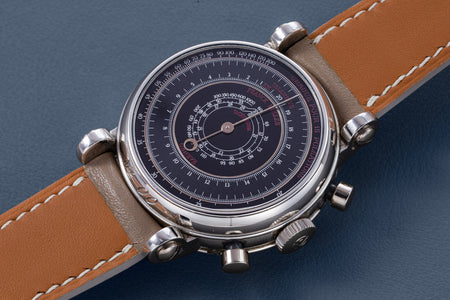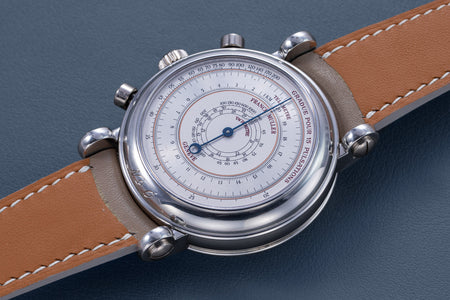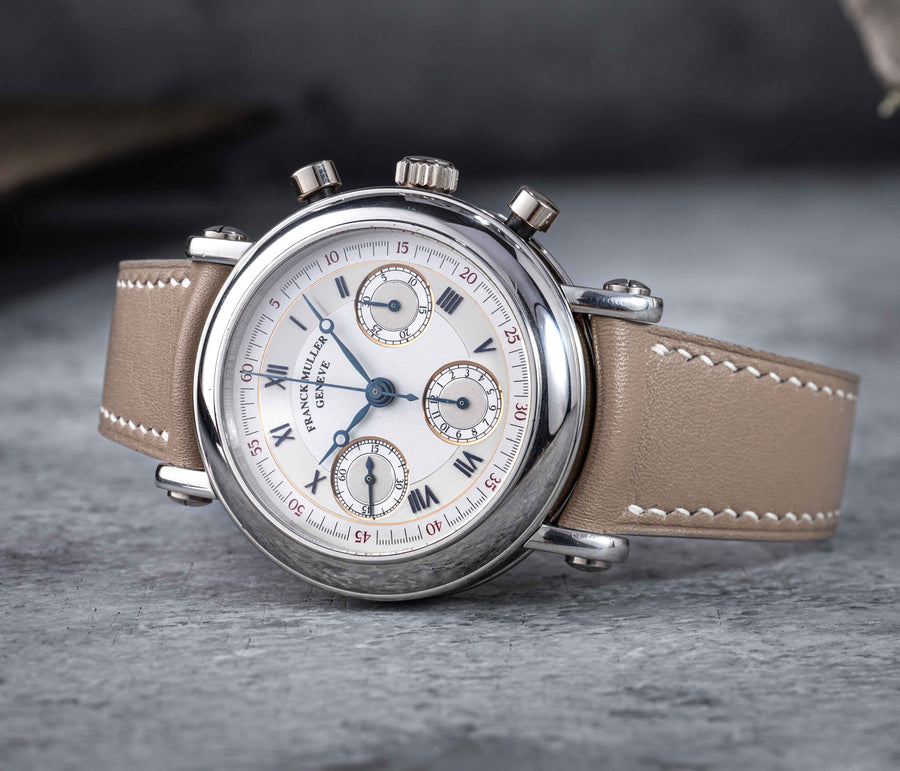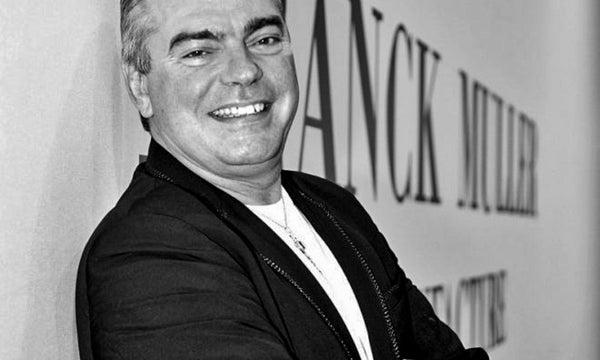"When we look at Picasso, everyone thinks 'Hey I can also be a Picasso,' but what everyone forgets that Picasso first mastered classical painting before he became inventive. It’s the same with watchmaking."
As the numerous independent watchmaking careers were unfolding up in the watchmaking valleys in the Jura mountains, a nascent independent watchmaker was just beginning his in Geneva. He would go on to become perhaps the most commercially successful watchmaker of the 90s.
Having studied watchmaking at Geneva’s local school, Franck Muller got his start restoring vintage timepieces, as most watchmakers did in the 1970s and 1980s. But Muller boasted outstanding mechanical aptitude and a good eye for strong design and it was not long before he began working on his first wristwatch.
In 1984, Muller debuted a tourbillon wristwatch, and soon followed with a variety of complicated wristwatches in quick succession, often building additional functions on restored 19th century movements. Much of his work was inspired by historical complications but reimagined for the modern day. One of his signature reinventions was the double-face chronograph that features an oversized seconds counter on the reverse of the watch, a complication once found on pocket watches but forgotten until revived by Muller.
1987
Franck Muller
Minute Repeater
Possibly arising from his work restoring vintage Patek Philippe world time watches, Franck Muller created several types of world-time wristwatches, often combining the Louis Cottier-style world time with other complications.
He spent his formative years at the workshop of Svend Andersen, the Dane who was a co-founder of the Académie Horlogère des Créateurs Indépendants (AHCI) in 1985, and an early mentor to the young watchmaker. There he worked on restoring timepieces belonging the Patek Philippe Museum, as well as building his own, which were merely signed “Franck” in those early days.
Muller combined technical talent with a flair for style, which led to his defining design, the tonneau-shaped Cintrée Curvex case, no doubt inspired by the early 20th century Art Deco wristwatches of Patek Philippe and Cartier he had work on.
1990
Franck Muller
Janus Chronograph Monopusher
Early examples here feature a minute repeater and single-button chronograph respectively, but both are powered by vintage 19th century movements, as was often the case for Franck Muller watches of the period.
1994
Franck Muller
Perpetual Calendar Chronograph
Muller’s Perpetual Calendar Chronograph is an impressively complex early example of his technical competence. Housing the M. Calibre 7000 mechanical automatic movement, it includes a perpetual calendar with day-of-the-week and date sub dials, AM/PM and leap-year indicators, retrograde monthly equation of time and aperture for the moon phases. On the back there’s an outer pulsometer graduation for 30 pulsations encircling an inner telemeter graduation and a spiral tachymetric scale in the centre.
In 1991, Muller had found Vartan Sirmakes, a jeweller turned casemaker who was then a prominent supplier of case components to several leading watch brands, including Daniel Roth in its heyday.
Together the duo founded the Franck Muller brand, which combined complications, gem stones, and a lavish dose of glamour in a manner never before seen in watchmaking. The brand’s incredible success over the next two decades catapulted the pair onto business magazine Bilanz’s annual ranking of Switzerland’s richest people – making them the first, and only, figures in independent watchmaking to make the list.
1992
Franck Muller
Chronograph Double Face Platinum
One of Franck Muller’s most popular complications was the double-faced chronograph, which had an extra-large seconds hand on its back, where instead of a case back sits a multi-scale dial. Ingenious yet surprisingly simple, this required only an extra-long pinion for the secondary hand to mirror the hand on the front dial. While Muller debuted the idea in modern-day wristwatches, the double-face chronograph was also found on antique pocket watches, which more often used the reverse face for a calendar display.
Learn More
DISCOVER MORE

THE CHAMPION OF LA VALLÉE
Daniel Roth
Enter Room
The Unassuming Finn
Kari Voutilainen
Enter Room














































































